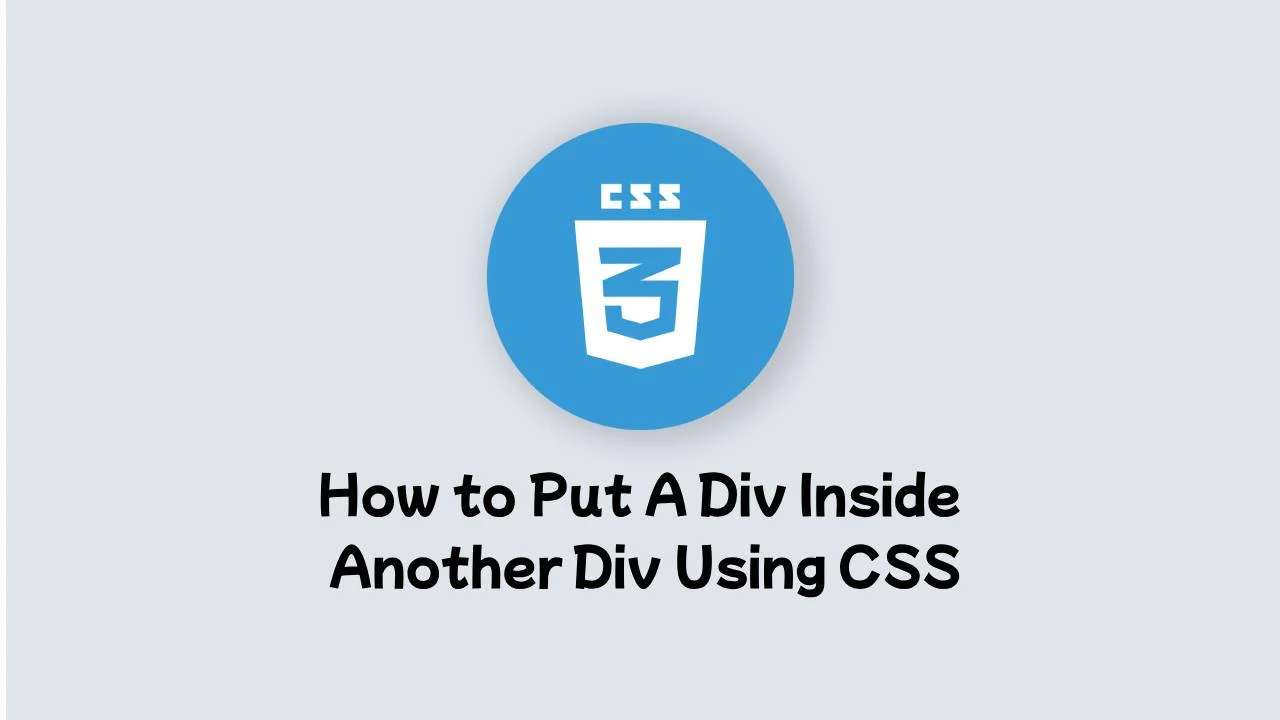How to Put A Div Inside Another Div Using CSS
When working with web design and layout, it's common to need to place one div element inside another div element. This allows for structuring content and creating complex arrangements on a webpage. CSS (Cascading Style Sheets) provides various techniques to accomplish this task. By utilizing CSS properties and selectors, you can easily nest div elements and control their positioning and styling. In this guide, we will explore different methods such as nesting, absolute positioning, flexbox, and grid, enabling you to confidently place a div inside another div and achieve the desired layout for your web pages.
Table Of Contents
01. Using Nesting Div:
<!DOCTYPE html> <html> <head> <title>How to Put A Div Inside Another Div Using CSS | Rustcode</title> <style> .outer{ width: 200px; height: 200px; background: lightblue; padding: 10px; } .inner{ width: 100px; height: 100px; background: lightyellow; margin-top: 10px; padding: 10px; } </style> </head> <body> <div class="outer"> outer div <div class="inner"> inner div </div> </div> </body> </html>
Output:
In this method, you simply nest the inner div within the outer div in your HTML markup. You can then apply CSS styles to each div as needed.
Read Also:
02. Using Absolute Positioning
<!DOCTYPE html> <html> <head> <title>How to Put A Div Inside Another Div Using CSS | Rustcode</title> <style> .outer{ position: relative; width: 200px; height: 200px; background: lightblue; padding: 10px; } .inner{ position: absolute; top: 30; left: 10; width: 100px; height: 100px; margin-top: 10px; padding: 10px; background: lightyellow; } </style> </head> <body> <div class="outer"> outer div <div class="inner"> inner div </div> </div> </body> </html>
Output:
This method positions the inner div absolutely within the outer div using the position: absolute property. Adjust the top and left values as needed to position the inner div within the outer div.
Read Also:
- How To Generate Random Rgb Color Using Javascript
- How To Generate a Random Color in JavaScript
- How To Sort Alphabetically Html Unordered Elements Using JavaScript
- How to Append Text to a DIV using JavaScript
- How to Call a JavaScript Function on Page Load
- How to Get Random Value from Array in Javascript
- How to Get an Object Keys and Values in JavaScript
03. Using Flexbox:
<!DOCTYPE html> <html> <head> <title>How to Put A Div Inside Another Div Using CSS | Rustcode</title> <style> .outer{ display: flex; width: 200px; height: 200px; background: lightblue; padding: 10px; } .inner{ width: 100px; height: 100px; margin-top: 30px; padding: 10px; background: lightyellow; } </style> </head> <body> <div class="outer"> outer div <div class="inner"> inner div </div> </div> </body> </html>
Output:
With this method, you make the outer div a flex container by applying display: flex to it. This automatically makes the inner div a flex item, which is placed inside the outer div.
Read Also:
04. Using Grid:
<!DOCTYPE html> <html> <head> <title>How to Put A Div Inside Another Div Using CSS | Rustcode</title> <style> .outer{ display: grid; width: 200px; height: 200px; background: lightblue; padding: 10px; } .inner{ width: 100px; height: 100px; padding: 10px; background: lightyellow; } </style> </head> <body> <div class="outer"> outer div <div class="inner"> inner div </div> </div> </body> </html>
Output:
This method makes the outer div a grid container by applying display: grid. The inner div becomes a grid item within the outer div, and you can further define the grid layout using additional CSS properties.
Read Also:
- How to print hello world using javascript
- How to redirect to another page using javascript
- How to refresh page on specific time using javascript
- How to remove a property of JavaScript object
- How to remove a specific item from an array in javascript
- How to scroll to the top of the page using javascript
- How to set default argument values in JavaScript functions
- How to validate an email address Using JavaScript
- What is the reverse of the push function in javascript
- Write a JavaScript function to check if an input is an array

Comments
Post a Comment